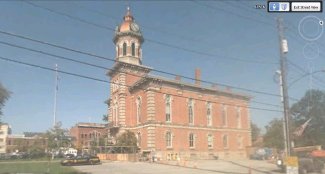 Analytics, Metrics and Music for the Radio Industry
Analytics, Metrics and Music for the Radio Industry
 An Indie Artist Pipeline to Internet Radio
An Indie Artist Pipeline to Internet Radio
 Radio Industry ROI Strategy
Radio Industry ROI Strategy
 A New Breed of Indie Artists
A New Breed of Indie Artists
Chardon Shooting: Perception of Radio
The village of Chardon in northeast Ohio became national news after 5 bullets found 5 students yesterday morning; three reportedly have died, and the others are hospitalized with wounds ranging from critical to stable.
Locally, the radio industry responded favorably. Stations across the dial updated the story as information leaked out. Only as the story unfolded, it became clear that radio was leaning on social media. Tweets and comments from Facebook were being read over the air.
Reality was being led by an unverified perception, based upon social media interaction with broadcasters. This wasn't journalism, and it wasn't just the local radio stations that fell victim to a new, easier way to dig up "facts."
| "Somewhere between yesterday and today, the perception got blurred that broadcast media is the first stop for breaking news." |
Let me take a minute to set the stage. Chardon is only 16 minutes down the road from my home (by Google Maps). It's where you go for a Sunday morning pancake breakfast. This is a picturesque village where a high school shooting is one of those "things like this don't happen here" stories. Our community is shattered and shaken. Setting the horrific event aside (that a high school student would shoot classmates in any USA city), I found the way information streamed out important to digest. It was not in the same way as when Columbine took this nation by surprise. |
I heard about it first online, over the stream of a local TV station's newscast. My wife came into my office with the news holding up her iPad; we disconnected cable in December 2011.
My first reaction was to go hunt for more information online - and not to turn on the radio that sits behind me. It was only after I reached a point of getting as much as I felt was available there that I did start scanning the dial to see how the radio industry was responding.
Chardon and Newbury (where I live) are communities practically next to each other . Our high schools are roughly 8 miles apart. What follows will help show how the perception of broadcast media as the go-to source is being erased.
I walked across the street to speak with my neighbor John, a good friend who had just climbed into his pickup truck and was about to pull out for a trip to the store. By luck I caught him as he was warming up the engine. He was listening to a local radio station that was playing music. (This was only a few minutes after I first learned of the shooting, and only about an hour after it occurred).
John rolled down his window, and I asked the question: "What do you know about what's happened in Chardon?" He hadn't heard anything. But, John's next action demonstrated to me how public perception of our radio industry has changed. Instead of scanning the dial, John turned off the radio, picked up his iPhone, and went straight to the news item online.
It's long been a saying in the radio industry that perception is reality. We used to live by those words as we painted our station's image (and personalities) as bigger than life.
Somewhere between yesterday and today, the perception got blurred that broadcast media is the first stop for breaking news.
Today our radio air talents read Tweets. Television station "news anchors" quote from Facebook. And the audience has become conditioned to scan new media first, because it's what we've let them become accustomed to doing.
| The reality is that the radio industry, while not by any means dead, has become a secondary source for community information. This is not demonstrated just by a shooting in the quaint little village of Chardon OH, but also by lack of coverage during electrical outages, snow storms, and other need-to-know times. |  |
 |
To get a reality check, this was not the case when shots were fired in Columbine on that terrible day in April, 1999. Radio and TV were THE source then, and nobody left their screen or turned off the radio in the 24 hours that followed.
There is a haze between how the public and industry executives perceive radio today. The reality is that we have brought this conditioning upon ourselves, and extraordinary steps are needed to regain broadcast radio's stature - even if it means having a station utilize new media in a better way to improve its image.
Perception remains reality. Though, the question we need to ask of all employees in the radio industry now is this: Is it the public's or our own perception of radio that is incorrect?
BTW: Dan, another neighbor, first heard about this tragedy when his daughter (who attends the same technical school mentioned in news reports) texted him that "something was happening at Chardon High."
Footnote: As with anything important, details are crucial. This is an exercise to help understand how far the radio industry needs to reach in acquiring new media skills.
Search Google News for "Chardon high shooting." Out of the top 100 returns, as of 11am this morning, only 7 radio stations were listed as carrying a story about this national attention-grabbing event. (One led to an "article not found" message.) Please note that Clear Channel's WTAM, Cleveland's only news station, did not appear - in fact, no Cleveland radio station web site was listed.
It's even worse for the keyword "Chardon shooting," though this AG version of the story does appear as #7 on the list. If you know how, it is possible to rank high.









